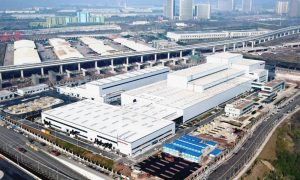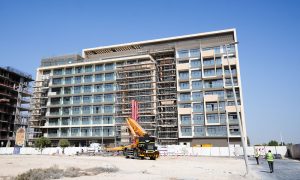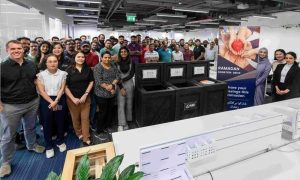The long road for Chinese manufacturers
It was on a site visit to a job site in Saudi Arabia where I was struck by evidence of one of the ‘legacy problems’ for Chinese construction machinery manufacturers selling equipment in the Gulf. ‘Struck’ may be too strong a word – it was more evidence that grated on my eardrums and vibrated my whole body.
The job site consisted of two tall towers alongside one another, with the concrete shells one day to be transformed into luxury hotels in Jeddah.
On the north tower the construction hoist was built by an Italian manufacturer, circa – and here I’m guessing – 2007. The ride was smooth and unremarkable.
On the south tower the construction hoist was of a similar age, but built by a Chinese manufacturer, and the ride was less smooth. The hoist made shrieking sounds of metal on metal as it made its way up the building, the effect of the motor and chain created a vibrating resonance in the cage, and it was a bumpy ride. While it didn’t feel unsafe, there was certainly a measure of relief as I stepped out onto the ground at the bottom.
Now, in the time since that hoist was built, a lot of things have changed in the world. For a start, it’s not as easy to sell construction equipment, long gone is the contractor attitude of ‘If you have it in stock we will buy it’.
In that time too, Chinese manufacturers have become increasingly internationally focused, a strategy that includes improved product engineering for specific market regions, as well as greater emphasis on spare parts, service support and aftersales measures than were in place in 2007. And there has been a noticeable appreciation of the all-important role that the dealers play, especially here in the Gulf.
In the past six or so months there has been signs of significant efforts by Chinese companies to penetrate deeper into the Middle East markets, including expanding their market share, and in certain cases drawing attention to their new focus with specific branding, such as Zoomlion’s ‘New Image, New Era’.
These efforts are backed by greater confidence in their latest products’ quality, as well as a more familiarity with the style of business that is successful in the local markets, and in some cases the local subsidiaries boast staff who have worked in the Middle East for a number of years.
Of course cost is the main competitive advantage of the Chinese products, yet the job is to convince buyers that they’re also up to the task.
Nevertheless, there are several problems confronting the Chinese manufacturers in the GCC.
For some brands there are lingering legacies of damage to their reputation by machines sold during the boom years that were perhaps not as geared up to perform in the Middle East as they should have been.
Likewise, the shift in market dynamics from the sellers’ market of 2005-2008, to the more-cautious buyers’ market of the present, has also resulted in changes in the dealership/distributor landscape. Some of the trading-company sellers of equipment have dropped out of the market, or are concentrating on specific –more profitable – product lines. Some of the newer entrants to the market, including Chinese manufacturers, found themselves with a partner who was no longer as enthusiastic about selling machinery as they were.
Furthermore, less established Chinese manufacturers are faced with the ‘green fields’ problem, meaning that they need to make significant investments to grow their capacities and service offerings, since they are in some cases beginning from scratch, as compared with companies that operated in the region for perhaps decades, and who already have in place significant infrastructure.
But despite these obstacles, the stars certainly seem well-aligned for the Chinese manufacturers in the market. Some already benefit from long-standing distribution agreements with local partners, that has seen them grow significant market share in local markets; while the market turbulence of previous years has ‘cleared the decks’, and means that only the more serious dealerships are still in the business.
Improved product engineering and aftermarket support will also greatly enhance job site performance. And of course – as everyone knows – price goes a long way in convincing buyers.























